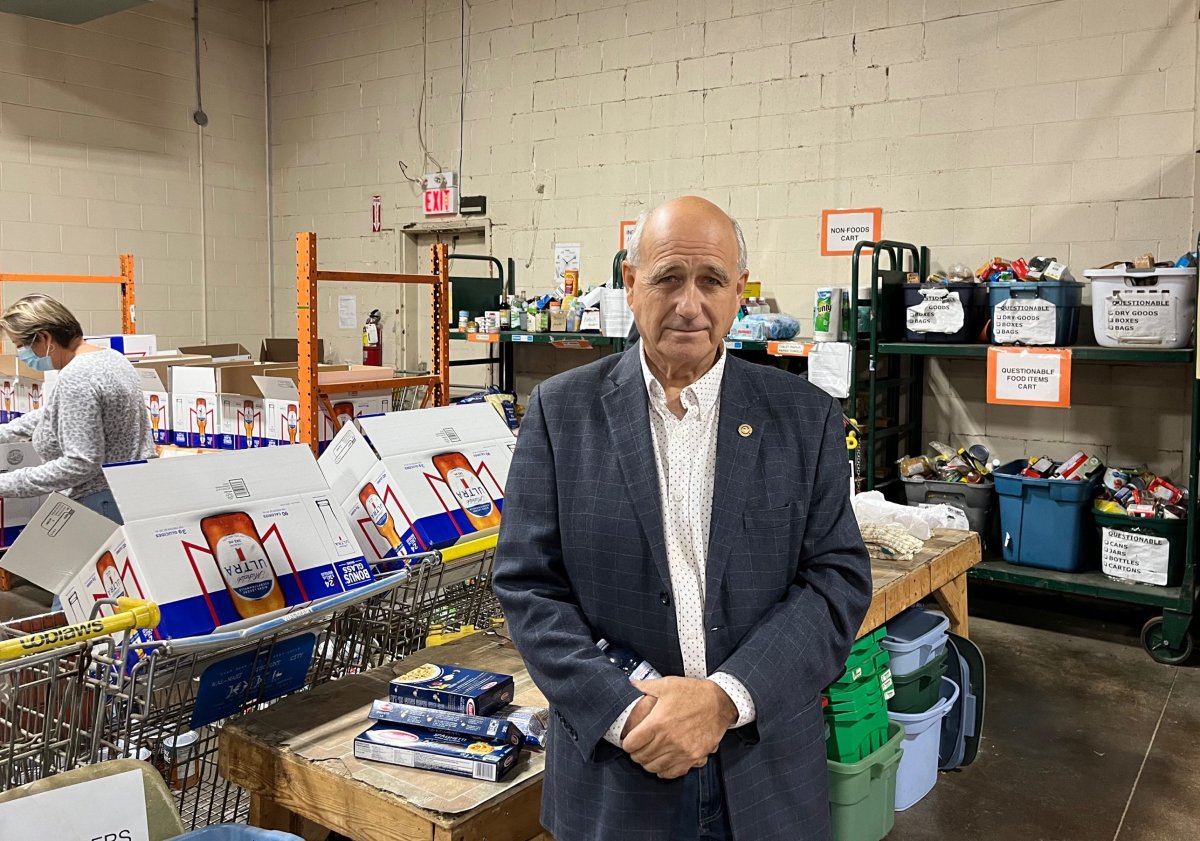A week after launching their annual fall food drive amid rising inflation and unprecedented levels of demand from the community, officials with the London Food Bank say the donations coming from the London, Ont., community has greatly defied their expectations.

The 34th annual Thanksgiving food drive began on Sept. 30 and runs until Oct. 10.
The food bank’s co-executive director, Glen Pearson, told Global News last week that he anticipated a dip in donations as a result of the economic pressures facing Londoners, including higher prices for gas, food and housing.
Those pressures were illustrated in figures released last week, which showed that nearly 23,200 people, nearly 9,300 households, had accessed the food bank this year, up 41 per cent from last year. Roughly 28 per cent of households were new to the agency, up from 18 per cent in 2021.
The food bank’s three busiest months ever for service have all come within the last four months, with the agency counting more than 4,000 families coming to them every month for help.
“If you don’t have it, don’t give it,” Pearson said at the food drive’s launch event on Sept. 29. “As a food bank, we don’t want to see your family suffer so that you can help other families.”

Despite the financial crunch, the generosity of the community has been on full display over the last week, with contributions well above where last year’s drive was at this point, Pearson says.

Get daily National news
“As of yesterday, our numbers are way up over the year before, they’re at 43,000 pounds right now, where a year before at this date it was at 29,000 pounds,” he said Thursday.
“As I posted this morning, I don’t fully understand it. I love it, though. What it means is that Londoners have really stepped up in ways that we weren’t expecting.”
As anticipated, this year’s drive has seen a pivot back to physical food donations over monetary donations, which was a greater focus during the 2020 and 2021 campaigns due to COVID-19.
So far, Pearson says the ratio of physical to monetary donations has been two to one.
“That could be because people don’t have the disposable cash as much as they did in the past, but when they come to the grocery stores and they see the bin for the food drive and remember that it’s on, they’re motivated by that,” he said.
As well, monetary donations aren’t stretching as far as they once did. According to Food Banks Canada, a $3.21 donation now equals roughly one pound of food, up from $2.60 last year.
Grocery prices rose 11 per cent in August, the fastest rate since 1981, according to Statistics Canada’s latest monthly consumer price index report, issued last month.
That being said, Pearson stresses that every little bit helps.
“We choose to let people give what they feel that they would like to give, and knowing that whether they give us food or finances, they’re both going to be used up right away, probably within a couple of weeks because the demand is so high.”
In addition to its own clients, the food bank also provides food to 22 other local agencies, and is the primary funder of the Middlesex-London Health Unit-led Harvest Bucks program.
Non-perishable donations can be dropped off at grocery stores in the London area, at any of London’s 14 fire stations, and at the food bank’s warehouse at 926 Leathorne St.
Fresh food donations should be brought directly to the food bank while monetary donations and donations to the Harvest Bucks program can be made through the food bank website.
The food drive ends Oct. 10.
— with files from Global News’ Andrew Graham and The Canadian Press









Comments